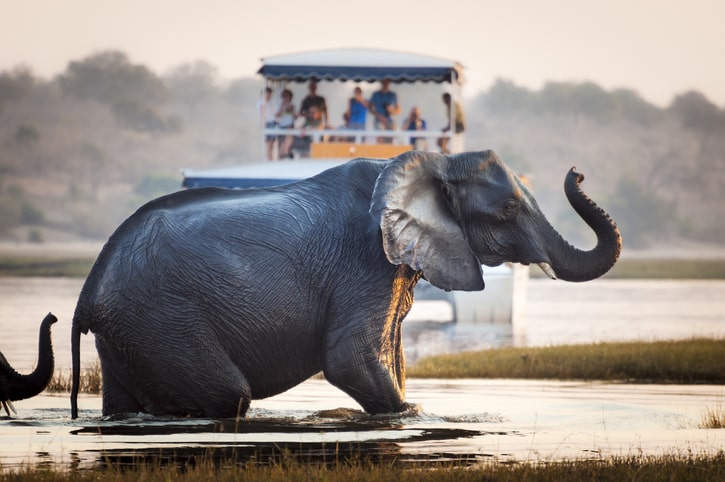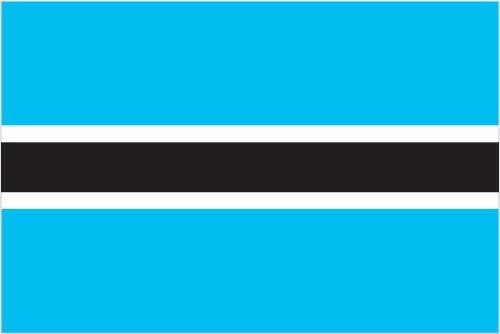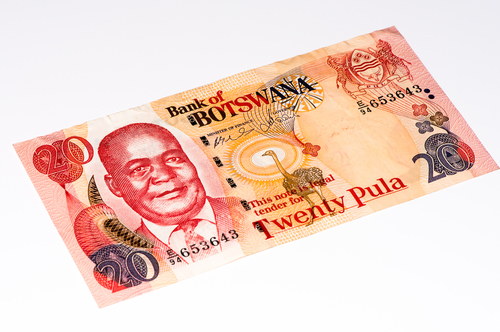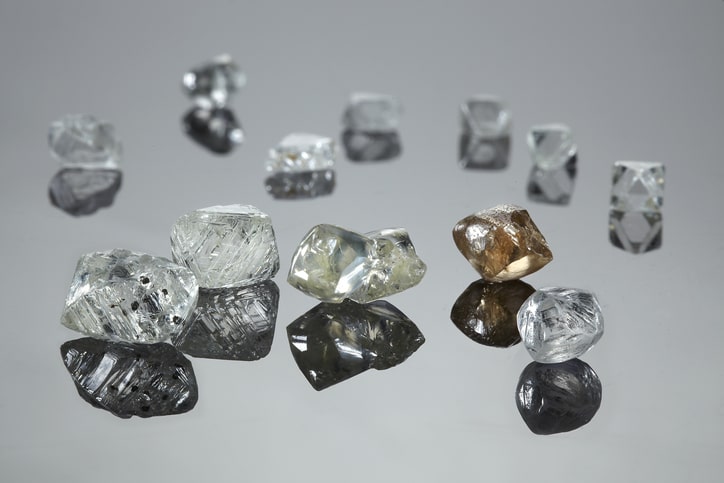Last updated on October 29th, 2022
Botswana, officially the Republic of Botswana, is a landlocked country in Southern Africa. Botswana is a sparsely populated country. Being one of the world’s fastest-growing economies, the country has evolved itself into an upper-middle-income country, in spite of the fact that it was once one of the world’s poorest countries. Let us learn more about Botswana about its history, geography, people, culture, economy and more.
Interesting Facts About Botswana
1. Botswana is right in the heart of southern Africa. The country has a near-triangular shape. The eastern part of the country has a sharp point that connects to Zimbabwe and South Africa. Botswana also shares a border with Namibia and Zambia.
2. Botswana’s name comes from “Tswana” – the name of the dominant ethnic group in the region. SeTswana refers to the language, while baTswana refers to the people.
3. Although the official language in Botswana is English, its national language is Tswana (sometimes Sechuana or Setswana). Tswana is a Bantu language that is widely spoken in the southern region of the continent. It is also the lingua franca (any language regularly used for communication between people who do not share a native language is a lingua franca) of South Africa.

4. Most of the elephants in the African continent call Botswana home. Over 130,000 elephants live and thrive in the country, making it the perfect place to spot these gentle giants. Most of them live in Chobe National Park.
5. Botswana is mostly desert. The Kalahari, one of the world’s most famous deserts, makes up about 70% of the land. Although named a desert, the Kalahari is actually an arid sandy area, making it a semi-desert. It is home to some of Africa’s most important wildlife.
6. The name of the Kalahari comes from “keir”, a Tswana word that means “great thirst”. Its name may also have been taken from tribal terms, “kalagare” or “khalagari”, which means “waterless place”.
7. One of the distinct features of the Kalahari is its salt pans – spots in the sand made of clay that contain salt. Animals consume the salt as part of their diet. One of the largest salt pans, the Makgadikgadi Pan is found in Botswana.
8. Like many parts of Africa, Botswana experiences mostly semi-arid to arid temperatures as it has a subtropical climate. Winter in the country is warm while its summers are (unsurprisingly) hot. Rain usually starts to fall starting in October until April. It is good to note that although rain does fall during this period, it tends to be erratic.
9. Botswana was one of the protectorates of Great Britain and was known as Bechuanaland. It changed its name after becoming independent in 1966. Since then, Botswana has remained democratic and is the oldest surviving democracy in the continent.
10. Botswana (then Bechuanaland) was placed under British protectorate to prevent the expansion of Germany, which had begun claiming lands in Africa in 1884 starting with Namibia. Because the Germans were rivals to the British, making Bechuanaland a protectorate helped abort the move of Germany eastward.
Flag of Botswana

11. Botswana is home to 8 major tribes: Bamangwato, Bakwena, Bangwaketse, Bakgatla, Barolong, Bamalete, and Batlokwa, Batawana. Each tribe has a leader known as Kgosi, which is the equivalent of a tribal chief. The people of the tribe look to their Kgosi for guidance and leadership. All Kgosi belong to a council known as the Ntlo ya Dikgosi or House of Chiefs. They function as the advisory body of the parliament of Botswana.
12. The main ethnic group in Botswana consists of twenty tribes. The main groups include the Bushmen (Basarwa), the Kalanga, and the Tswana.
13. One of Botswana’s gems include the Okavango Delta. This inland delta can be found in the Kalahari Desert and is the world’s largest inland delta. The basin collects water through rainfall, then loses it through transpiration and evaporation. Due to the presence of swampland and vegetation, many animals inhabit the delta. It is one of the stunning features of the Kalahari and has been granted a World Heritage Site status by UNESCO.

14. Botswana’s currency is the Pula, which means “rain” or “blessing”. Rainfall is considered a blessing to the country because it helps vegetation grow and provides water to the land. The Pula can be broken down to 100 thebe, a Setswana word that means “shield”. It is issued and regulated by the Bank of Botswana.
15. In Botswana, diamonds are forever. It is the second largest diamond producers in the world. In 2016, the country produced a whopping 40 million carats of this precious stone. To put the economic cost of that figure in perspective, a 910-carat diamond once sold for $40 million in 2018.
16. Speaking of diamonds, some of the biggest gems to have ever been unearthed came from Botswana. One such gem was the 1,098-carat rough stone discovered in June 2021. The stone was roughly the size of a chicken egg. Just weeks after the 1,098-carat stone was found, another (bigger) one was dug. The rough stone weighed 1,174 carats. Both stones were found in the Karawe mine in Botswana.
17. As a practice in the diamond industry, the largest diamonds found are often named. One of the largest stones dug up by miners in Botswana was the 1,109-carat diamond. It was named “Lesedi La Rona”, which is Tswana for Our Light. In 2016, it was valued at around $70 million.

18. With the number of carats a single diamond can carry coming from Botswana, it is no surprise that the country is famous for having the largest precious gems on the planet. It currently has six (6) stones in the world’s top 10 list of the biggest gems.
19. In 2016, temperatures got too high in Botswana, with figures soaring above 41°C. Due to the absence of rain, the country suffered through the worst drought ever in 34 years.
20. Botswana is one of four countries that form the Caprivi Strip. The Strip is a geographic salient formed by Namibia and bordered by Botswana, Angola, and Zambia.
21. About 40% of Botswana is purely Nature. This portion of the territory is under government protection as sanctuaries, reserves, wildlife management areas, and national parks.
22. The capital city of Botswana is Gaborone. The locals affectionately nicknamed it “Gabs”. The capital was named in honor of Chief (Kgosi) Gaborone, who was the leader of the Tswana in 1880.
Botswana on map
23. Botswana shares the shortest land border with Zambia. The border is just 443 ft. long (135 meters). It is the shortest land boundary in the world.
24. Botswana’s land surface is 581,730 sq. km. With a population of more than 2 million, it has a population density of 4 individuals for every square kilometer.
25. Botswana has an enviable biodiversity. Over 150 mammalian species live in Botswana, including the Big Five – lions, African elephants, leopards, cape buffaloes, and black rhinos. It is also home to over 200 species of amphibians and reptiles, and more than 460 species of birds.

26. The San Bushmen live in parts of the Kalahari Desert that make up some of Botswana’s land. Indigenous to southern Africa, the San people use a click language that is part of the Khoisan group of languages. The language sounds like clicks made with the mouth and tongue.
27. In 2016, Lonely Planet named Botswana as the top destination for tourists. This is because the government has adopted a “high quality, low impact” approach to tourism. This means that while the price tag is rather high, tourists enjoy the best experiences. There are relatively fewer tourists and that they all get to enjoy the unadulterated beauty of Botswana without causing a negative impact on the environment.
28. Botswana’s first president post-independence was Sir Seretse Khama. While studying in the U.K., he met and married Ruth Williams, a white Englishwoman. Interracial marriages were frowned upon at the time and the couple lived in exile in England for some time.
29. In Botswana, rain on a wedding day is believed to be a blessing. However, a stormy weather on this special day also means bad luck.

30. A staple food in Botswana is a porridge known as bogobe which is made from millet or maize. It may be served with relish such as onions, tomato sauce, and chicken stock.
31. When giving a gift or handing out something, Batswana either hold out both hands or use their right hand. If one hand is used, the left hand is placed under the right elbow to support the right hand.
32. Batswana consider it rude to walk in the middle of two people who are conversing. It is much better to walk around either person. If it cannot be avoided, pass between the individuals with the head bowed while saying, “Intshwarele”, which means, “Excuse me”.
33. Soccer is a favorite sport in Botswana. Villages even have their own teams, who sometimes compete with one another.
34. Weddings are expensive affairs. In traditional ceremonies, the celebrations can last for two days at the minimum. During the celebrations, food and drinks are served, music is played for dancing, and speeches are made. This is why over 50% of couples prefer to live together.
35. In Botswana, people prefer not to wear red during a thunderstorm because it is believed that the color attracts lightning.
. . . continue reading on the next page
